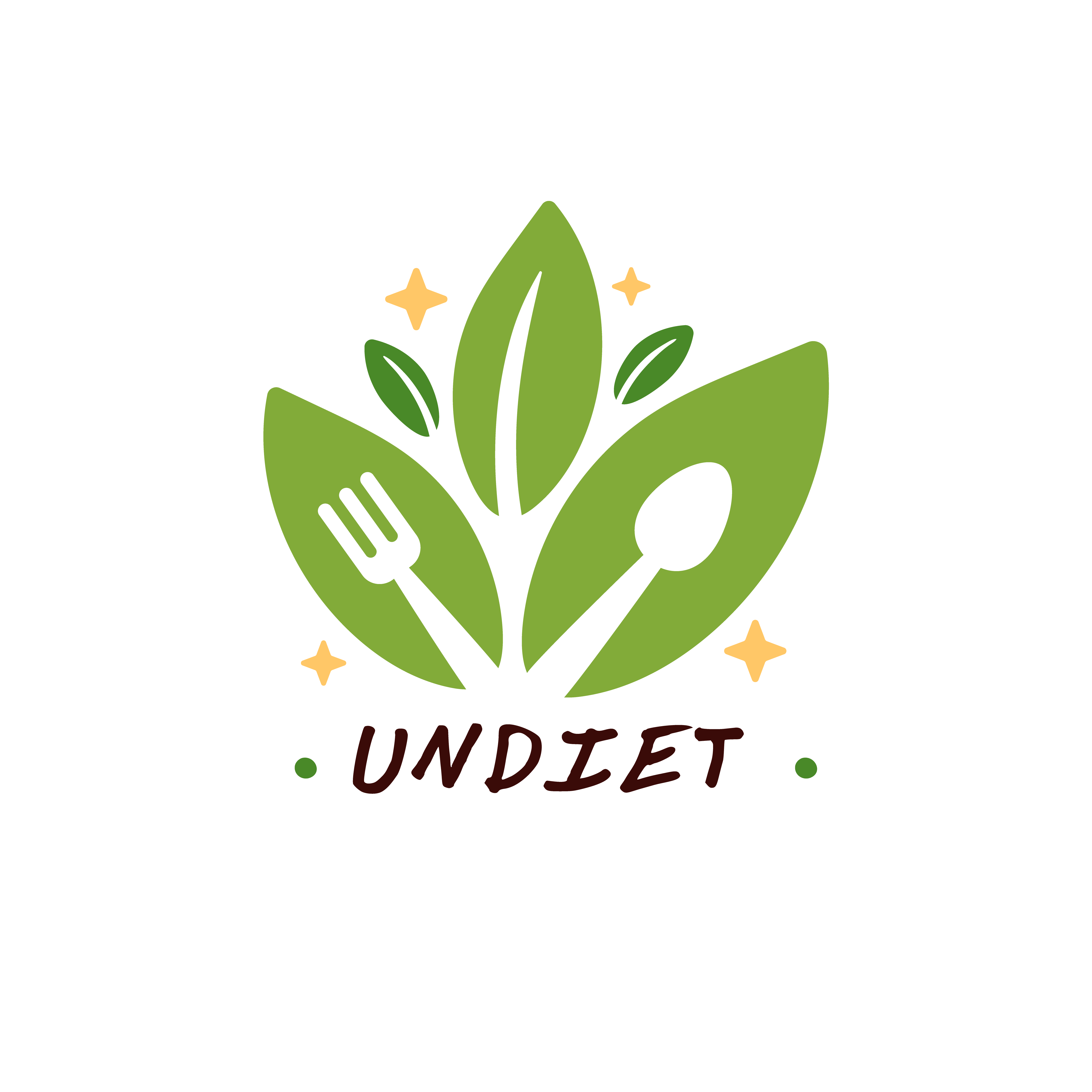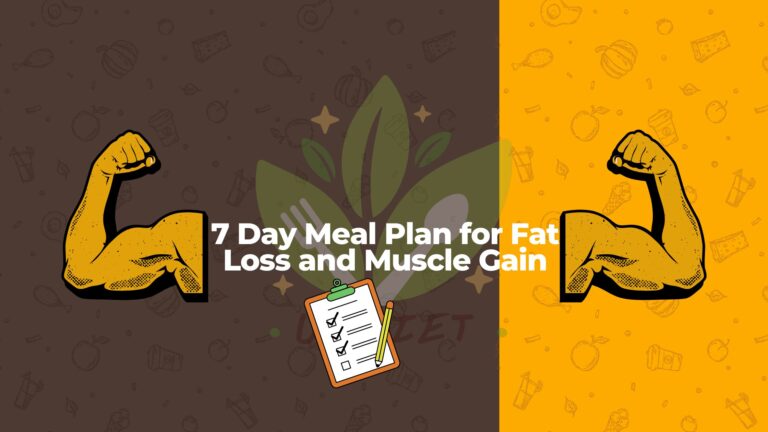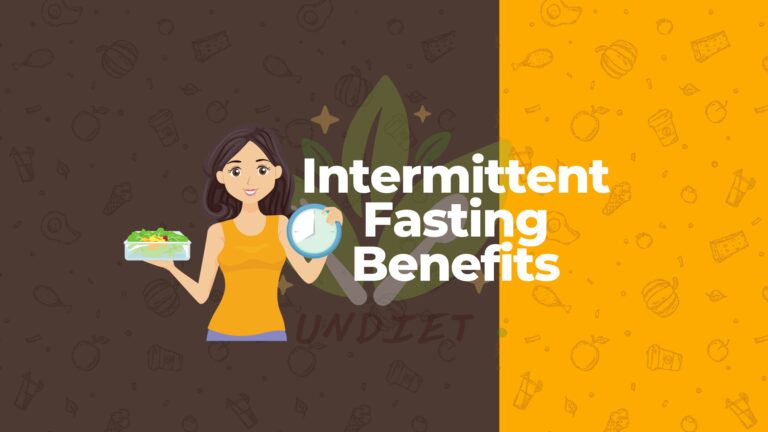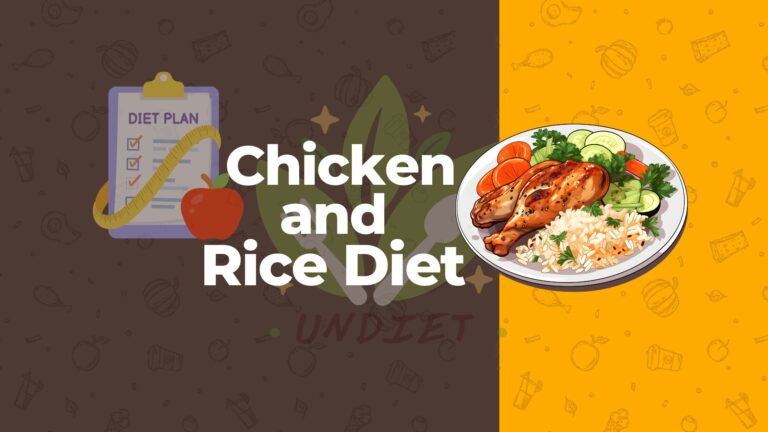30 Day IBS Diet Plan: Blueprint for Your Insider Gut Relief
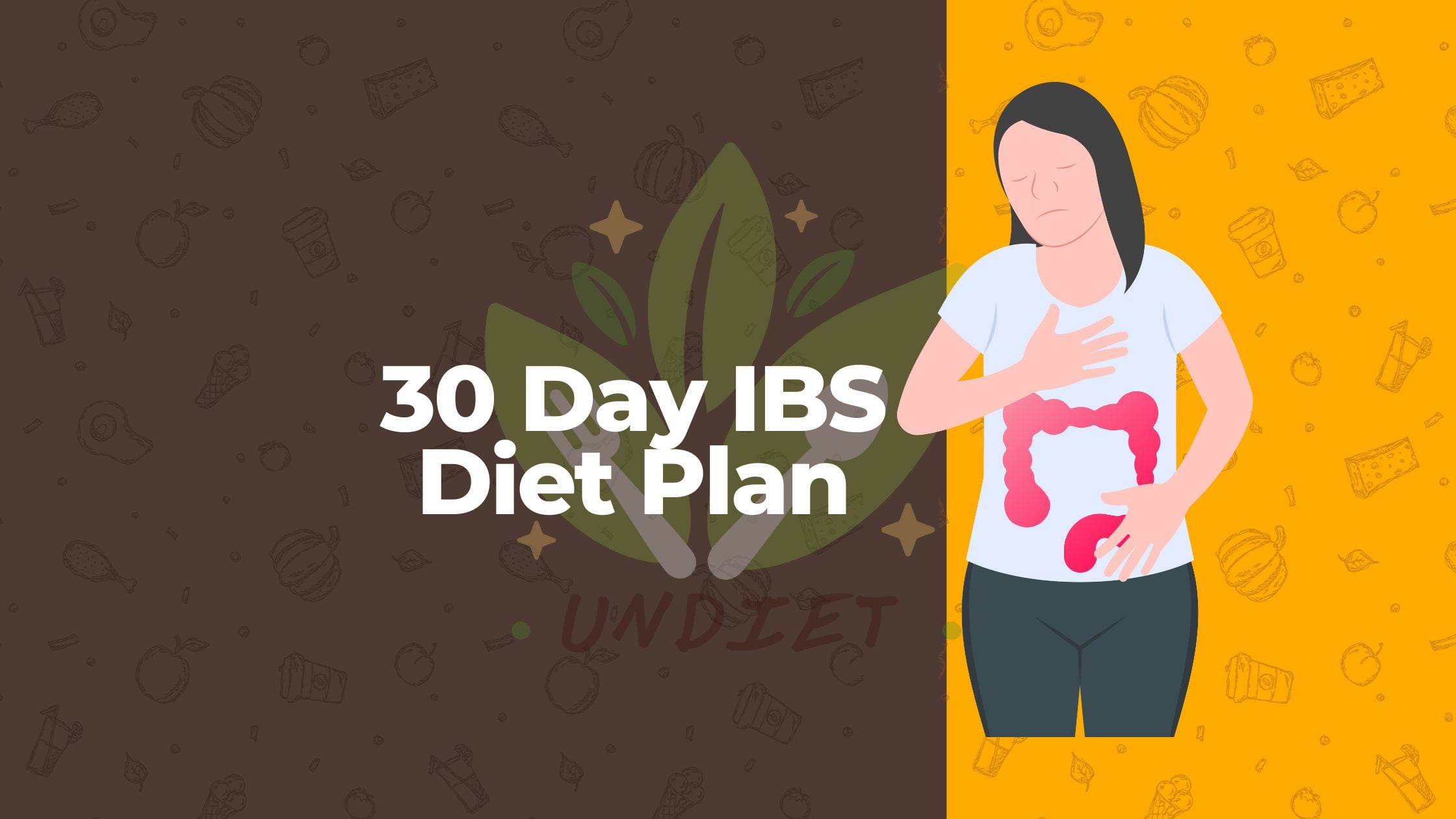
A 30 Day IBS Diet Plan focuses on eliminating triggers and reintroducing foods systematically. It aims to identify personal food sensitivities and manage symptoms.
Embarking on a diet plan to manage Irritable Bowel Syndrome (IBS) can be transformative for those dealing with this chronic condition. The plan typically starts by stripping the diet back to basics with a low-FODMAP approach, avoiding foods that are known to trigger digestive discomfort.
This period is crucial for resetting the gut and providing symptom relief. After this initial phase, various foods are carefully reintroduced one at a time, allowing individuals to pinpoint what they can tolerate and what exacerbates their symptoms. It’s a journey of personal discovery that requires patience and close attention to the body’s reactions. With guidance from healthcare providers, this structured approach not only fosters a better understanding of one’s dietary triggers but also promotes a healthier relationship with food, paving the way for long-term symptom management and overall well-being.
What Is Ibs And Its Symptoms
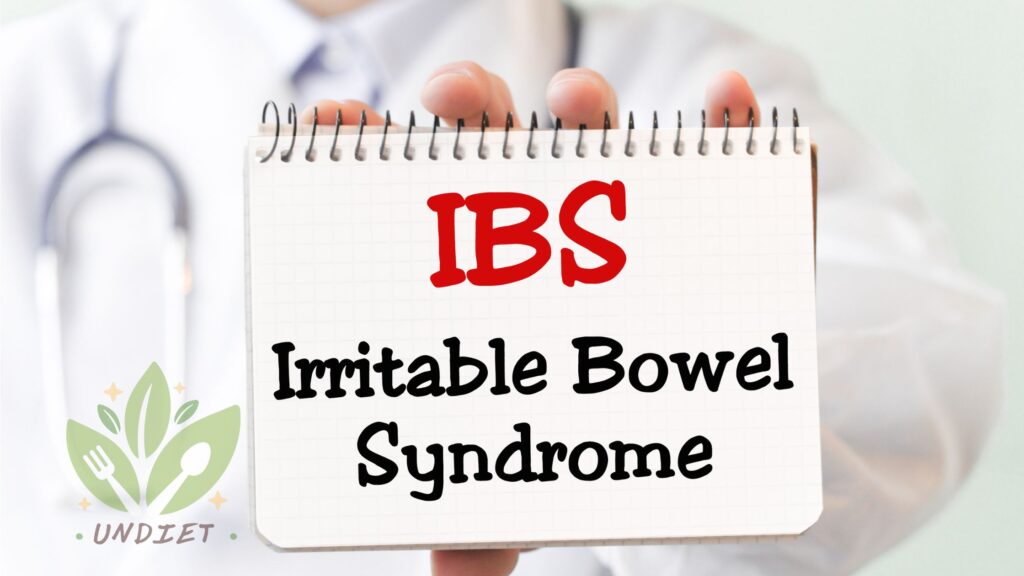
Embarking on a 30 Day IBS Diet Plan can seem daunting without proper knowledge of what Irritable Bowel Syndrome (IBS) is and the symptoms it presents. It’s essential to grasp these details before diving into a tailored diet that can help manage and alleviate these symptoms. IBS isn’t just a minor inconvenience; it can significantly affect the quality of life, making it critical to address through dietary adjustments.
Defining IBS and Its Common Symptoms
Irritable Bowel Syndrome (IBS) is a chronic gastrointestinal disorder characterized by a collection of symptoms affecting the large intestine. While the root cause of IBS remains unclear, it’s believed to be a result of various factors, including intestinal muscle contractions, nervous system irregularities, inflammation in the intestines, severe infection, or changes in gut bacteria.
- Abdominal pain: A hallmark symptom, often described as cramping or bloating.
- Altered bowel habits: This can manifest as either diarrhea (IBS-D), constipation (IBS-C), or a combination of both (IBS-M).
- Gassiness and bloating: Excessive flatulence and a feeling of swelling in the abdomen.
- Food intolerance: Often individuals with IBS find certain foods exacerbate their symptoms.
- Fatigue and difficulty sleeping: Due to the discomfort and pain, sleep disturbances are common.
Understanding these symptoms helps in making informed choices when following a 30 Day IBS Diet Plan, as certain foods can trigger or worsen these symptoms.
The Impact Of IBS on Daily Life
If you live with IBS, the impact on daily activities can be substantial. IBS symptoms can cause:
| Aspect of Life | Impact |
| Work Productivity | Anxiety over food choices and accessibility to restrooms potentially leads to social isolation. |
| Social Engagements | Anxiety over food choices and accessibility to restrooms potentially leading to social isolation. |
| Physical Activity | Abdominal pain or discomfort may discourage participation in exercise or physical hobbies. |
| Mental Health | Increase in stress levels which can, in turn, exacerbate IBS symptoms, creating a vicious cycle. |
The 30 Day IBS Diet Plan aims to reduce these symptoms, promoting a more comfortable and manageable lifestyle. It involves identifying and eliminating foods that trigger symptoms while introducing IBS-friendly alternatives.
The Role Of Diet In Managing Ibs
The role of diet in managing Irritable Bowel Syndrome (IBS) cannot be understated. For many individuals living with IBS, finding the right balance in their diet is a critical step towards controlling symptoms and regaining comfort in their daily lives. Symptoms of IBS can be triggered by what and how you eat, so understanding and adapting your diet is essential. A tailored 30 Day IBS Diet Plan, when followed with care and guidance, can act as a powerful tool to identify triggers and manage symptoms effectively.
Understanding How Diet Affects Ibs Symptoms
Every bite matters when it comes to IBS. The gastrointestinal tract responds to different types of foods in unique ways. Foods high in FODMAPs — a group of carbohydrates found in certain foods like wheat, onions, and garlic — are common triggers. These substances can ferment in the gut, leading to gas, bloating, and discomfort. Other foods might speed up or slow down the digestive process, causing either diarrhea or constipation. Symptom tracking during a structured 30 Day IBS Diet Plan helps individuals observe the relationship between consumption and reaction.
Importance Of Following A Specific Diet Plan For IBS Management
Commitment to a specialized diet plan like the 30 Day IBS Diet Plan is crucial for symptom management. This personalized approach allows for a thorough examination of dietary habits, helping to identify specific foods that trigger symptoms. Each day’s meals are carefully structured to avoid potential irritants while providing balanced nutrition. Consistency is key, as it creates a controlled environment for monitoring changes and making informed decisions about which foods to include or exclude long-term.
Spearheading dietary change can seem daunting, but it’s a strategic approach to regaining digestive harmony. A well-conceived diet plan is not a cure but a pathway to better understand your body and control your IBS symptoms. As you transition through the 30-day diet, you’ll discover foods that support your digestive health and contribute to a better quality of life.
Initial Assessment And Goal Setting
Embarking on a 30 day IBS diet plan can be a transformative journey towards better understanding and managing your symptoms. It starts with a crucial phase: initial assessment and goal setting. This stage involves identifying what’s unique to your condition and structuring a tailored approach to tackle it. It’s a moment for reflection, strategizing, and laying down a solid foundation for the dietary changes you’re about to make.
Identifying Personal Dietary Triggers
The first step in the assessment phase is to pinpoint your dietary triggers. Not all foods affect individuals the same way, especially with IBS. Creating a detailed food diary is an effective approach to recognizing patterns that exacerbate symptoms. Not every meal, snack, and drink consumption along with any reactions felt. This record-keeping should span over a few weeks for accuracy.
- Food types: Note whether you’re consuming high FODMAP foods, lactose, gluten, etc.
- Portion sizes: Sometimes, it’s not just what you eat, but how much.
- Meal timing: Eating habits and intervals between meals also play a role.
- Stress levels: Stress can often trigger IBS; keep track of your emotional state.
Setting Realistic Goals For The 30 Day Diet Plan
Once you’ve identified your triggers, the next step is to set realistic and clear goals. These objectives must be measurable and attainable to keep you motivated and on track. Decide what you want to achieve – symptom relief, better gut health, or understanding your body’s reactions to certain foods. Use the SMART criteria to structure your goals:
| S | M | A | R | T |
| Specific | Measurable | Achievable | Relevant | Time-Bound |
| Target particular foods to eliminate. | Use a symptom scale to track changes. | Focus on changes that you can maintain. | Ensure the goals align with your lifestyle. | Set checkpoints throughout the 30 days. |
Remember to be kind to yourself as you proceed. Progress is a variable and gradual process. During this 30 day IBS diet plan, it’s not just about the food you eliminate but also about fostering a healthier relationship with food and your body.
Creating A Supportive Environment

Embarking on a 30 Day IBS Diet Plan can be a journey filled with hope for relief and apprehension about the changes ahead. To navigate this journey successfully, creating a supportive environment is paramount. This involves not only the physical preparation of your living spaces but also addressing the mental and emotional components tied to dietary adjustments. By transforming your kitchen and pantry into havens for IBS-friendly foods and cultivating a resilient mindset, you set the stage for a smoother transition into a lifestyle that caters to your well-being.
Tips For Preparing Your Kitchen And Pantry
Revamping your kitchen and pantry is the first step in your 30 Day IBS Diet Plan. Consider these strategies to ensure your space is ready and inviting for the dietary transformation ahead:
- Purge the Pantry: Start by removing foods that trigger IBS symptoms. This may include high-FODMAP ingredients, dairy products, or gluten-containing items, depending on personal triggers.
- Stock Up on Staples: Replace the eliminated items with IBS-friendly alternatives like rice, oatmeal, and low-FODMAP fruits and vegetables.
- Organize for Ease: Arrange foods based on the frequency of use, with IBS-safe items within easy reach. This minimizes the temptation for non-compliant foods.
- Invest in Storage Solutions: Use clear containers for easy identification of foods and to keep them fresh longer.
Adapting your kitchen environment is a tangible step towards supporting your IBS diet, making daily food choices simpler and stress-free.
Understanding The Mental And Emotional Aspects Of Dietary Changes
Altering your diet is not merely a physical challenge; it comes with significant mental and emotional implications. Recognize that discomfort and resistance are common reactions to change. Nonetheless, embracing a positive outlook is critical to success. Here are ways to tend to your mental and emotional health:
- Seek Support: Surround yourself with friends or online communities who understand the challenges of IBS and can provide encouragement.
- Practice Mindfulness: Engage in activities like meditation or yoga to reduce stress, which can exacerbate IBS symptoms.
- Set Realistic Expectations: Understand that progress can be incremental and that there might be setbacks. Celebrate small victories.
Coping with the emotional ebbs and flows requires patience and self-compassion. Your well-being is a journey, not just a dietary plan.
Identifying Trigger Foods To Avoid
Identifying trigger foods is a cornerstone of managing Irritable Bowel Syndrome (IBS). Each individual’s experience with IBS is unique, and pinpointing the specific foods that exacerbate symptoms can greatly improve quality of life. Embarking on a 30 Day IBS Diet Plan provides the perfect opportunity to systematically eliminate and then reintroduce potential trigger foods. By maintaining a disciplined approach and keeping a detailed food diary, it’s possible to discern patterns and single out the culprits causing discomfort.
Common Trigger Foods For Ibs
The quest to tame IBS symptoms begins with knowledge of the most likely offenders. Here’s a list of foods that are commonly known to trigger IBS symptoms:
- Dairy products, especially those rich in lactose
- Gluten-containing grains, such as wheat, barley, and rye
- Certain fruits and vegetables high in fructans or fructose
- Legumes and beans are known for causing gas and bloating
- Fatty or fried foods, which can be tough to digest
- Caffeinated drinks, such as coffee and some sodas
- Alcohol, particularly beer and wine
- Artificial sweeteners, like sorbitol and xylitol found in sugar-free gum and candy
Recognizing these foods and monitoring their effects on your body is crucial. The goal is to reduce IBS flare-ups while still enjoying a balanced and nutritious diet.
Strategies To Eliminate Trigger Foods From The Diet
Elimination is the first step toward symptom relief. Here are effective strategies to help identify and eliminate possible IBS-trigger foods:
- Keep a detailed food diary: Document everything you eat and drink, along with any symptoms that occur.
- Implement an elimination diet: Begin by removing common triggers for a period, then reintroduce them one at a time to observe the effects.
- Consult a dietitian: A professional can provide valuable guidance on how to maintain a nutritious diet even when eliminating multiple food groups.
- Read labels carefully: Hidden ingredients can sneak their way into your diet. Become an expert at decoding food labels.
- Experiment with alternatives: Explore substitutes for your favorite dishes that do not include the trigger foods.
Through observation and adjustment, it becomes possible to craft a personalized diet plan that minimizes IBS symptoms without sacrificing the enjoyment of eating.
Incorporating Gut-friendly Foods
Incorporating gut-friendly foods into your diet is a key step towards managing Irritable Bowel Syndrome (IBS). Through the mindful selection of ingredients that foster a healthier gut environment, individuals can experience relief from IBS symptoms and enjoy a diverse range of flavors and nutrients. This 30 Day IBS Diet Plan aims to reduce digestive discomfort by including foods that soothe and nourish your digestive system.
Choosing Foods That Promote Gut Health
Maintaining a balanced gut microbiome is essential for digestive health and overall well-being. The focus here is to select foods rich in probiotics, prebiotics, and fiber to support the good bacteria in your gut. Foods to include:
- Probiotic-rich foods: such as yogurt, kefir, sauerkraut, and kimchi, to introduce beneficial bacteria.
- Prebiotic foods: like garlic, onions, bananas, and asparagus, to fuel those good bacteria.
- Fiber-dense foods: featuring oats, carrots, and chia seeds to help maintain regular bowel movements.
Eating a variety of these items can help reduce inflammation and promote healthy gut function. Remember to introduce new foods gradually to monitor how your body reacts and adjust portions accordingly to suit your individual needs.
Meal Planning And Recipe Ideas For The 30 Day Diet Plan
Creating a structured meal plan for the next 30 days helps in establishing a routine, ensuring you consume gut-friendly foods regularly. Here are some tips and recipe ideas:
- Start each day with a probiotic-infused breakfast, like Greek yogurt with a sprinkle of chia seeds and fresh berries.
- Include prebiotic-rich snacks, such as hummus with carrot sticks or a banana with a handful of nuts.
- For lunch and dinner, focus on meals with lean proteins, whole grains, and a variety of vegetables. A stir-fry with chicken, quinoa, and fermented vegetables, for example, can be both satisfying and beneficial for gut health.
Advance preparation is your ally. Consider cooking in batches to save time and ensure you always have access to healthy, homemade meals. Packed with the right balance of nutrients, these meal ideas are designed to help manage IBS symptoms while providing delicious and nourishing options for your diet plan.
Tracking And Monitoring Dietary Intake
Tracking and monitoring dietary intake is an essential part of managing Irritable Bowel Syndrome (IBS). By paying close attention to your daily food choices, you gain valuable insights into what foods trigger your symptoms and which dietary habits help you maintain a healthier gut. The key to success in a 30 Day IBS Diet Plan lies in meticulous record-keeping and symptom observation. This proactive approach not only empowers individuals to identify potential irritants but also provides a framework for making informed decisions about dietary adjustments over time. Get ready to explore the tools and techniques that will support your journey towards a happier digestive system!
Utilizing Food Journals And Tracking Tools
Documenting daily food intake and observing patterns in how certain foods affect your body are critical steps in managing IBS. Using a food journal is a tried-and-true method, allowing you to record:
- Meals and snacks consumed
- Portion sizes
- Ingredients and preparation methods
- Time and context of eating (e.g., stress level, environment)
- Physical activities and hydration levels
Pairing your food journal with digital tracking tools can streamline this process. Many apps feature barcode scanners for easy input, databases of food profiles, and even connect to fitness devices to track physical activity and other health metrics. Choosing the right app can take the guesswork out of the equation, keep you consistent, and make the tracking process a part of your routine with minimal hassle.
Monitoring Symptoms And Progress Throughout The 30 Days
Regular monitoring of your symptoms is essential for pinpointing triggers and observing improvements. Make it a habit to note any changes in your:
- Digestive symptoms (e.g., bloating, gas, constipation)
- Energetic levels
- Mood fluctuations
- Sleep patterns
Correlate these observations with your daily dietary intake from your food journal. This analysis will help you identify which foods may be problematic or beneficial. As the days progress, look for trends and patterns that emerge. This approach allows you to tailor your diet more precisely and supports long-term management strategies for IBS.
A beneficial exercise is to create a table that matches your food intake with your symptoms. This clear visual representation can be particularly helpful:
Add more rows as needed
| Date | Food & Drink Intake | IBS Symptoms | Notes |
| Day 1 | Example: Gluten-free toast, almond butter | No bloating or discomfort | Slept well the night before |
| Day 2 | Example: Dairy-free yogurt, mixed berries | Mild bloating noted | Consumed with coffee |
As you advance through the 30 Day IBS Diet Plan, you will gain a more cohesive understanding of your body’s responses to different foods. This empowers you with knowledge, placing control back into your hands and paving the way for a personalized and effective IBS diet strategy.
Coping With Challenges And Setbacks
Embarking on a 30 Day IBS Diet Plan can be a transformative journey, but like any path worth traveling, it comes with its own set of obstacles. One of the keys to success in this diet plan is anticipating these challenges and being prepared with strategies to navigate them. Whether it’s managing cravings or addressing unexpected flare-ups, staying the course requires resilience and adaptability. Here’s how you can maintain your commitment to your gut health even when confronted with hurdles.
Strategies For Managing Cravings And Temptations
- Identify triggers: Understand what prompts your cravings. Is it stress, boredom, or social settings? Recognizing the root cause is the first step in addressing it.
- Plan ahead: Keep IBS-friendly snacks on hand, so you’re prepared when cravings hit. Having healthy options readily available can make all the difference.
- Mindful eating: Eat slowly and appreciate your food. This habit helps in reducing overindulgence and keeping cravings in check.
- Stay hydrated: Sometimes thirst can mask itself as hunger. Keep a bottle of water nearby and ensure you’re well-hydrated throughout the day.
- Seek support: Don’t hesitate to reach out to online forums, healthcare providers, or diet support groups for advice and encouragement.
Dealing With Unexpected Flare-ups During The Diet Plan
Unexpected flare-ups can be especially demotivating when you’ve been diligently following your IBS diet. To mitigate these setbacks:
- Keep a food diary: Track what you eat to identify potential triggers that could be causing flare-ups, despite being on the diet plan.
- Maintain a balanced lifestyle: Ensure you’re getting enough sleep, exercise, and stress-relieving activities as these can all impact IBS symptoms.
- Flexible meal planning: Have a contingency plan with safe foods that are easy on your gut for those days when your symptoms are more pronounced.
- Consult your doctor: If flare-ups are frequent, touch base with your healthcare provider to adjust your diet plan accordingly.
Remember, the road to managing IBS is not always straight. Be patient and kind to yourself as you navigate through these challenges.
Assessing Changes In IBS Symptoms
Embarking on a 30 Day IBS Diet Plan is a strategic approach to managing the often uncomfortable and unpredictable symptoms of Irritable Bowel Syndrome (IBS). Observing your body’s responses during this period is critical. By tracking fluctuations in your digestive health, you can identify patterns and make informed decisions on whether certain foods contribute to symptom relief or exacerbation. It’s a journey of discovery into what works best for your unique system. Let’s delve into how you can effectively assess these changes for a better grip on your IBS management.
Noticing Improvements In Digestive Health
After adjusting your diet to combat IBS, the first objective is to identify any positive changes within your digestive system. This could manifest as:
- Reduced frequency of digestive discomfort
- Decreased intensity of abdominal pain or cramping
- Normalized bowel movements, be it a reduction in diarrhea, constipation, or both
- Less bloating and gas after meals
To track these improvements, consider maintaining a daily symptom diary. This invaluable tool helps to pinpoint which dietary adjustments are fostering your progress.
Recognizing Any Lingering Or New Symptoms That May Require Further Evaluation
While many individuals experience significant relief through dietary adjustments, it is not uncommon to notice new or persisting symptoms. Should this occur, it is essential to:
- Document each symptom’s characteristics: noting their severity, duration, and any potential triggers.
- Continue to adhere strictly to your prescribed diet, ensuring consistent results.
- Consult with a healthcare professional to assess whether the symptoms are IBS-related or indicative of other health concerns.
Further evaluation might include additional dietary changes, medical tests, or a closer look at other lifestyle factors such as stress and exercise.
Establishing Long-term Dietary Habits
Establishing long-term dietary habits after the strict confines of a 30 day IBS diet plan is a journey that requires careful planning and commitment. A successful transition involves not just a temporary change, but an overhaul of your eating lifestyle, which can have profound effects on managing symptoms of Irritable Bowel Syndrome (IBS). By integrating sustainable strategies and personalized eating plans, individuals can continue to manage their IBS effectively and enjoy a wider variety of foods without the fear of triggering symptoms.
Transitioning From The 30-day Plan To A Sustainable, Long-term Diet
The conclusion of a 30 day IBS diet plan doesn’t signify an end, but rather the start of a new chapter in dietary awareness. It’s essential to slowly reintroduce foods while monitoring the body’s response. This methodical approach helps in identifying specific triggers and building a diversified diet that maintains gut health. Consider the following steps:
- Reintroduce foods one at a time: Single out foods to add back into the diet systematically, allowing several days before introducing another, to observe how your body reacts.
- Keep a detailed food diary: Document what you eat, along with any symptoms, to pinpoint foods that are well-tolerated or those that provoke IBS symptoms.
- Focus on balanced meals: Ensure each meal includes a variety of nutrients—carbohydrates, proteins, and fats—to support overall health.
- Stay hydrated: Adequate water intake is crucial for digestion and can help alleviate IBS symptoms.
Creating A Maintenance Plan For Ongoing IBS Management
Beyond the initial 30 days, developing a maintenance plan that aligns with personal food preferences and nutritional needs is key to long-term success. This ongoing strategy includes:
- Educate yourself about food ingredients and preparation methods that minimize IBS symptoms.
- Understanding portion control: Smaller, more frequent meals can help manage IBS symptoms.
- Remaining flexible: IBS is unpredictable; adjust your maintenance plan as needed based on symptom changes and lifestyle factors.
- Engaging professional support: Consider consulting a dietitian who specializes in IBS to help tailor your long-term plan.
By constructing a customized maintenance plan that’s both flexible and adheres to your unique dietary needs, the path to managing IBS becomes clearer and more manageable.
Frequently Asked Questions For 30 Day Ibs Diet Plan
What Is A 30 Day Ibs Diet Plan?
A 30 Day IBS Diet Plan is a structured eating regimen designed to identify trigger foods and alleviate symptoms of Irritable Bowel Syndrome over a month.
Can Diet Improve Ibs Symptoms?
Yes, modifying your diet can significantly reduce IBS symptoms by avoiding specific trigger foods and incorporating gut-friendly options.
What Foods To Avoid With Ibs?
Individuals with IBS are often advised to avoid high-FODMAP foods, lactose, caffeine, artificial sweeteners, and fried or fatty foods to ease symptoms.
Is Gluten-free Beneficial For Ibs?
Many with IBS report improved symptoms on a gluten-free diet, as gluten can be a trigger for some people.
How Long To Follow An Ibs Diet?
An elimination diet for IBS is typically followed for 2-6 weeks, after which foods are gradually reintroduced to assess tolerance.
What Are High-Foodmap Foods?
High-FODMAP foods include certain fruits, vegetables, dairy products, grains, and sweeteners known to exacerbate IBS symptoms.
Are Probiotics Good For Ibs?
Probiotics can be beneficial for IBS, helping to balance gut bacteria and potentially reduce bloating, gas, and irregular bowel movements.
Is Fiber Good For Ibs?
Soluble fiber may aid with IBS as it helps normalize bowel movements, but insoluble fiber can worsen symptoms in some individuals.
Does Stress Affect Ibs?
Stress can trigger or exacerbate IBS symptoms, making stress management techniques important in managing this condition.
Can Exercise Help With Ibs?
Regular exercise is known to help reduce IBS symptoms by decreasing stress and improving overall digestive function.
Conclusion
Embarking on a 30 day IBS diet plan is an empowering step toward managing digestive health. With attention to trigger foods and a focus on balance, significant relief is possible. Remember, your journey is personal, and adjustments may be needed. Support your gut, find your plan, and embrace the path to wellness.
